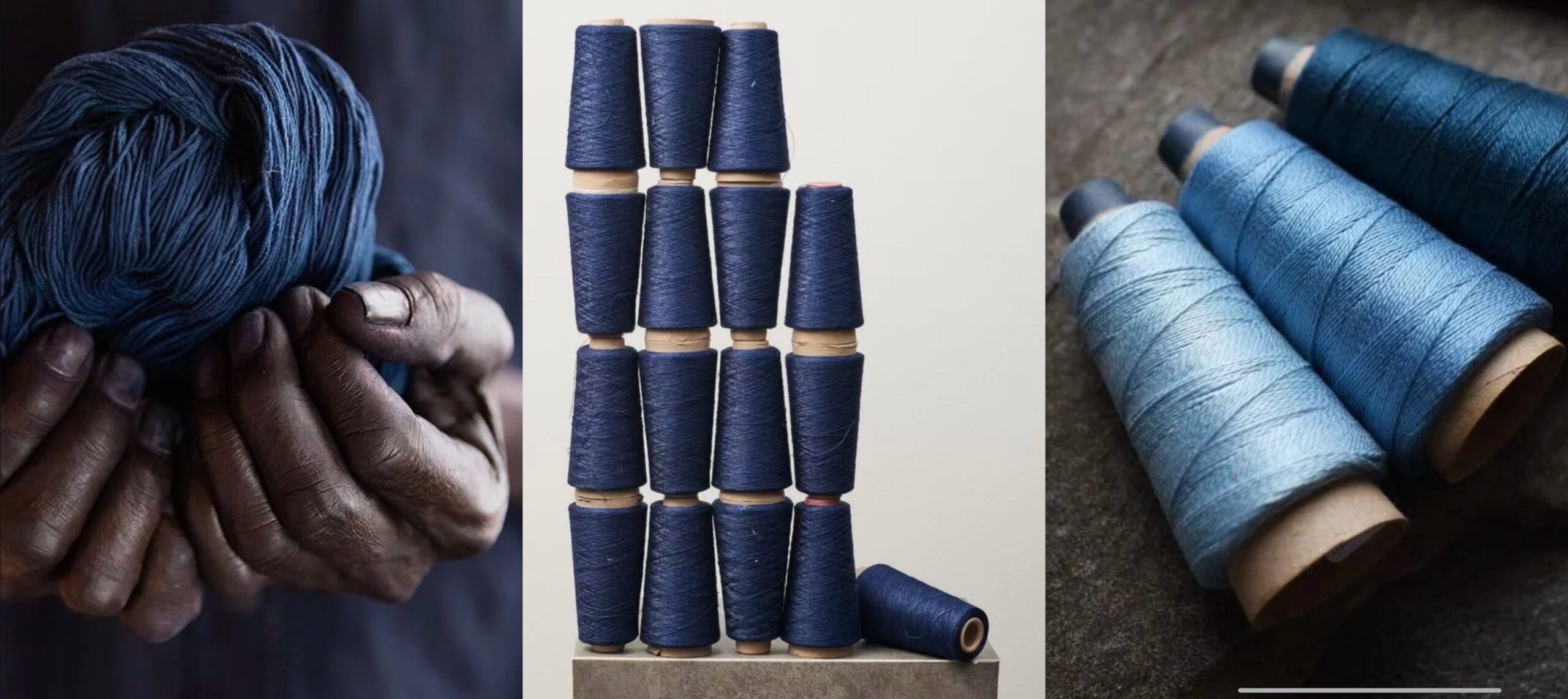Guide d'évaluation et d'achat de la qualité du denim

Temps de lecture estimé: ~ 10 minutes
Introduction
The global fashion industry relies on denim as its fundamental element because this durable fabric evolved from work clothing into a timeless essential for contemporary fashion. The quality standards of denim materials determine how well it performs along with its lifespan and visual appeal. The guide provides complete instructions about denim evaluation through touch and visual examination while analyzing superior denim materials and production methods along with strategic procurement advice. The document tackles widespread denim problems together with durability factors alongside guidance for selecting appropriate denim fabrics according to specific requirements. This guide provides professional knowledge which enables both consumers and buyers to make educated purchasing choices.
Assessing Denim Quality by Touch
Tactile evaluation serves as a valuable first step for denim quality assessment because it reveals fabric construction and potential longevity. Touch serves as an essential evaluation method yet buyers need to use it in conjunction with other methods to achieve complete assessment. Key tactile indicators include:
- Thickness and Weight: High-quality denim with 12 oz per square yard weight and above delivers substantial structure that makes it suitable for continuous use throughout the year. Lighter fabrics (8–10 ounces) are suited for warmer climates but may lack durability.
- Densité de tissage: When you rub or gently stretch the fabric tightly woven denim maintains its firm texture because it has minimal thread gaps that prevent deformation. The surface texture of loosely woven denim shows as rough while it tends to stretch or tear easily.
- Surface Texture: High-quality denim presents a smooth uniform surface without fuzzy threads or nodules which delivers comfortable touch to users. Subpar denim tends to have rough surfaces which expose noticeable flaws.
- Stiffness and Softness: Raw denim requires sizing treatment before it becomes stiff yet it softens after washing which fans of denim breaking in process appreciate. The softness of denim fabric indicates weak weaving patterns that reduce its durability.
- Élasticité: Pure cotton denim offers limited elasticity because of its minimal stretch properties but blending it with 2–5% spandex creates stretchable fabric that recovers well. High-quality stretch denim fabrics preserve their form during stretching operations without losing their shape.

| Tactile Indicator | High-Quality Denim | Low-Quality Denim |
|---|---|---|
| Épaisseur | 12 oz+, substantial | 8–10 oz, lightweight |
| Density | Tight, firm | Loose, deformable |
| Surface Texture | Smooth, minimal fuzz | Rough, flawed |
| Stiffness | Stiff initially, softens | Soft, lacks resilience |
| Élasticité | Strong recovery | Prone to sagging |
Materials and Processes Influencing Denim Quality
Denim quality depends on three key factors: raw materials and weaving methods and finishing operations which work together to create fabric durability alongside visual quality and tactile experience.
- Yarn Quality: Long-staple cotton varieties from America and Egypt produce durable yarns that match each other better than short-staple cotton. Premium denim producers use ring-spun yarns because they create strong fabrics with a distinctive fuzzy texture.
- Dye Quality: Indigo dyes, traditional for denim, should penetrate evenly with good colorfastness to achieve controlled fading patterns. Poor-quality dyes lead to excessive color loss, diminishing aesthetic appeal. The use of sulfur dyes in black and colored denim requires reduced water consumption although their durability varies across different products.
- Weaving Techniques: Traditional narrow shuttle looms with 91 cm width produce selvedge denim which includes colored edges with red dye for fraying prevention while demonstrating expert craftsmanship. The modern shuttleless looms produce wider fabrics (190 cm) efficiently but do not match the artisanal quality of selvedge denim. The direction of twill fabric weaves determines both the texture characteristics and visual aesthetic appeal.
- Processus de finition: The pre-shrinking process called Sanforization results in a shrinkage rate of 1–3% yet raw denim without Sanforization can shrink between 10% to 15%. Different finishing processes including enzyme washing stone washing and sandblasting can soften denim but excessive use weakens the fabric fibers.
- Durability Testing: The assessment of durability through touch measurements does not deliver exact durability results which professional testing for abrasion resistance and tear strength can provide. Real-world wear tests, such as daily or bi-daily washing, reveal practical performance.

Sourcing High-Quality Denim
The process of buying denim at wholesale prices involves choosing proper distribution channels while setting exact product requirements. Available options include:
- Plateformes en ligne: Online shopping platforms including lydenim.com et Alibaba connect buyers to a wide range of worldwide products which they can explore easily. Because buyers cannot inspect fabrics in person they must depend on detailed product specifications and composition information along with customer review feedback.
- Marchés de gros: The Pingdi Denim Market within Foshan’s China district combines large product selection with competitive pricing opportunities for wholesale customers. People new to the market face difficulties when shopping at these locations because they lack understanding of fabric quality standards which heightens the chance of selecting inferior products.
- Factory-Direct Purchases: Factory-direct purchasing from manufacturers such as Candiani from Italy and Kuroki from Japan provides both fresh stock delivery and cost reduction benefits. The selection of styles is restricted in this case so buyers need to specify their exact requirements.
- Magasins de tissus locaux: Local Fabric Stores offer hands-on fabric examination which enables immediate quality evaluation but they limit their fabric options particularly for selvedge denim and heavyweight denim.

Jean à lisière en sergé
| Sourcing Channel | Avantages | Inconvénients |
|---|---|---|
| Plateformes en ligne | Wide variety, convenient | No tactile inspection |
| Marchés de gros | Diverse options, low prices | Requires expertise, higher risk |
| Directement de l'usine | Cost-effective, fresh stock | Limited styles, specific needs |
| Local Stores | Hands-on quality check | Fewer options, higher prices |
Inspecting Jeans Fabric
When evaluating jeans fabric you need to perform visual assessments and touch tests and review information about the fabric.
- Visual Inspection:
- Composition: The labels contain information about 100% cotton fabric and cotton-polyester or spandex blends.
- Poids: Fabrics marked as 12 ounces or higher indicate durability.
- Origine: The quality reputation of Denim exists mainly in Japanese, Italian and United States , china.
- Tisser: Clear twill lines suggest tight weaving; surfaces should be free of major flaws.
- Lisière: Colored selvage edges inside hems denote premium craftsmanship.
- Couleur: Uniform indigo without dyeing imperfections is ideal.
- Tactile Assessment:
- Épaisseur: The material thickness provides a substantial feeling while 12 oz+ is the preferred weight range.
- Density: Firm and tight when rubbed or pulled.
- Texture: Smooth, free of lumps or stickiness.
- Élasticité: Strong recovery in stretch fabrics.
- Artisanat:
- Stitching: Even, dense stitches with reinforced crotch and pockets.
- Matériel: Durable YKK zippers and copper rivets.
- Finition: Serged edges on pockets and waistbands prevent fraying.
- Brand and Fit: Trusted brands such as Levi’s and Nudie Jeans operate under strict quality control measures. The process of wearing jeans allows people to check how comfortable the pants are along with their structural integrity and size.
Common Denim Challenges
Denim faces certain problems which affect its looks and operation yet proper selection and maintenance can help manage these issues:
- Color Loss: The color of untreated indigo denim fades easily which can transfer to lighter materials. Premium denim products experience controlled fading that remains visually appealing. Cold-water soaking of the fabric before washing helps stabilize the dye colors.
- Rétrécissement: The unsanforized raw denim type experiences a maximum 10% shrinkage but pre-shrunk denim only reduces by 1–3%. Washing your clothes in cold water will help prevent them from shrinking.
- Deformation: Stretch denim may develop knee puffing or seat sagging. The combination of well-fitted styles with high-quality elastic fibers works to decrease deformation.
- Wear and Tear: Inner thighs and hems are prone to thinning or holes due to friction. The lifespan of the garment increases through patching and intentional distressing can function as a design choice.
- Additional Issues:
- Colorfastness: Sunlight or friction may cause fading.
- Odor: Chemical smells from sizing require airing out.
- Stiffening: Harsh detergents can harden fabric.
Durability of Jeans
High-quality jeans, such as 14-ounce Japanese selvedge, can endure 5–10 years or more with proper care. Factors influencing longevity include:
- Fabric Quality: Heavyweight, tightly woven pure cotton is most durable.
- Wear Frequency: Occasional wear extends lifespan compared to daily use.
- Activity Level: Physical labor accelerates wear.
- Care Practices: Cold-water gentle washing and air-drying preserve fabric integrity.
- Fit: Non-restrictive fits reduce stress on seams and fabric.
The lifespan of fast-fashion jeans ranges from several months to two years but mid-range brands can last between 2 to 5 years and premium jeans can reach ten years or more with proper maintenance.
Characteristics of the Most Durable Jeans
The following attributes ensure maximum durability:
- High Weight: 14 ounces or more for superior abrasion resistance.
- Coton 100%: Outperforms low-quality blends; minimal high-quality spandex maintains durability.
- Tissage serré: Minimizes thread slippage and wear.
- Robust Yarn: Ring-spun yarn offers greater resilience.
- Fit: Straight or loose fits distribute stress evenly.
- Stitching: High-strength polyester core thread, dense stitching, and reinforced stress points.
- Matériel: Copper rivets, YKK zippers, and reinforced pockets or crotch gussets.

Conclusion
Assessing denim quality begins with touch, revealing thickness, density, and texture, but requires visual and compositional verification for accuracy. Premium denim, characterized by long-staple cotton, quality dyes, and artisanal weaves like selvedge, offers exceptional durability, lasting 5–10 years or more with proper care. Sourcing options range from online platforms to factory-direct purchases, each demanding clear specifications. By addressing challenges like fading and wear through informed selection and maintenance, consumers can maximize denim’s lifespan. For custom denim solutions, contact malone@lydenim.com or explore lydenim.com
